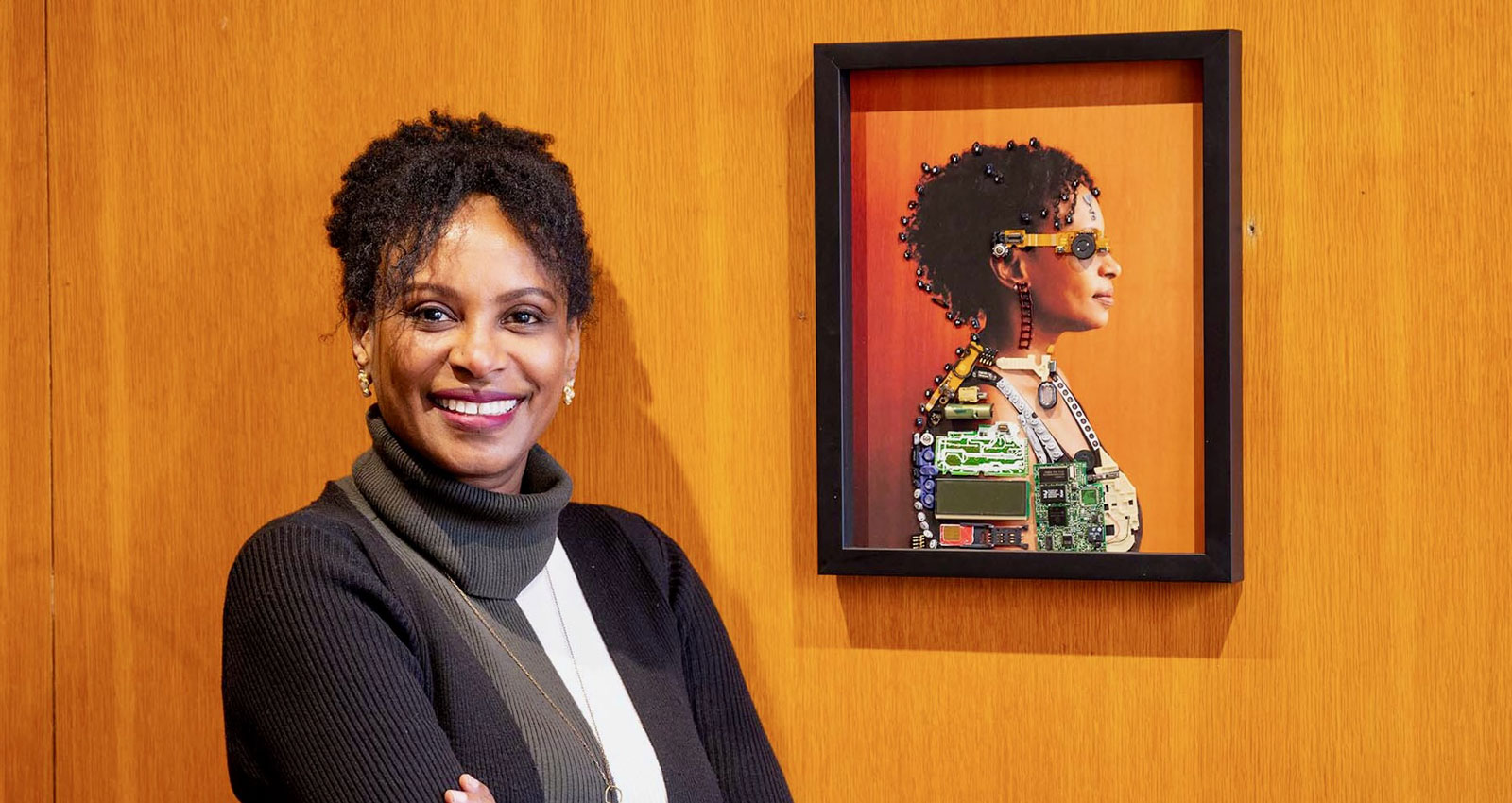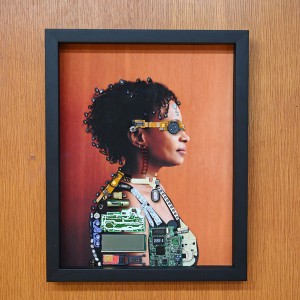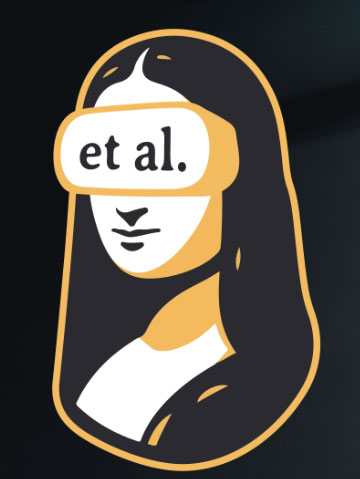‘Cyborg Self-Portrait’ of Rhonda McEwen Merges Science and the Arts

Vic U president Rhonda McEwen’s passion for melding science and the arts is on display in a cyborg self-portrait she created from dissembled cellphones. (Photos by Minh Truong)
By Joe Howell
In our collective imagination, art is often portrayed as science’s opposite—separate fields that, if not in direct conflict, are at least estranged. In truth, the two go hand-in-hand, says Dr. Rhonda McEwen, president and vice-chancellor of Victoria University in the University of Toronto.
“I really don’t think that we do service to artists or to technologists with that dichotomy,” she says. “Computer science, natural science, there’s always art. We’ve known this as early as the greats like da Vinci, who incorporated anatomical drawings into his art.”
Dr. McEwen is well-acquainted with both worlds. As Canadian Research Chair in Tactile Interfaces, Communication and Cognition, she is the first president at Vic U with an academic focus on STEM (science, technology, engineering and mathematics). Her research has been shared in dozens of peer-reviewed journal articles, conference proceedings and books, and her research on touchscreen technology for children led to the creation of Julia, the first Sesame Street muppet on the autism spectrum.
 Her passion for intertwining science and creativity is encapsulated in a piece of art she created: a self-portrait she embellished by dissecting her old BlackBerry phones, using the parts to turn herself into a cyborg.
Her passion for intertwining science and creativity is encapsulated in a piece of art she created: a self-portrait she embellished by dissecting her old BlackBerry phones, using the parts to turn herself into a cyborg.
“The idea for this came to me as we were preparing our recent book,” says Dr. McEwen—The SAGE Handbook of Human–Machine Communication, which she co-edited with Andrea L. Guzman and Steve Jones. “I was thinking about Marshall McLuhan’s Understanding Media: The Extensions of Man, which popularized the idea of the cyborg beyond the realm of science fiction. These ‘extensions’ weren’t necessarily prostheses or physical connections; he meant the way that media allows us to extend human capacity, capability and limits. Through newspapers and radio, we extend our ability to speak long distances, for example. In my research, I’ve looked at people with physical and cognitive disabilities to better understand how technologies may help extend abilities beyond our physiological limits, but also exacerbate attentional deficits.”
But why crack open ancient cellphones? “I’ve always enjoyed taking a screwdriver and pulling apart technology. Some people knit to keep their hands busy; I dissemble things to see how I can put them back together in a new way using the same parts,” she says. “BlackBerry is special to me because it was my first device that extended my abilities outside the office. BlackBerry was also the subject of my PhD dissertation.”
While Dr. McEwen likes to take things apart, her mom has a talent for putting them together. “My mother did her master’s in fashion and design, and she would always be on a sewing machine or cutting fabric. When I got closer to what she was doing, I saw that this fashion that looked like art was very mathematical; there was construction and architecture, measuring, designing shapes and objects—it was all geometry, really. That’s why I’ve always felt that art and science are two hands on the same body.”
 It makes sense, then, that her new lab at Vic U is called (et al.), short for The Emerging Technology and Arts Lab. The interdisciplinary hub explores the intersection of technology, arts and human cognition. The just-launched website was created entirely by her lab students, notes Dr. McEwen. “Even the logo, which is the Mona Lisa in a VR headset!” Designed by PhD candidate Sho Conte, the image is a fitting blend of science and art, indeed.
It makes sense, then, that her new lab at Vic U is called (et al.), short for The Emerging Technology and Arts Lab. The interdisciplinary hub explores the intersection of technology, arts and human cognition. The just-launched website was created entirely by her lab students, notes Dr. McEwen. “Even the logo, which is the Mona Lisa in a VR headset!” Designed by PhD candidate Sho Conte, the image is a fitting blend of science and art, indeed.
Dr. McEwen plans to give (et al.) a proper launch this spring, so expect more news about that soon. Until then, students interested in participating or learning more can reach the lab at contact.etal@vicu.utoronto.ca. The group meets every other Friday, and students from undergrad to postdoc are welcome. Just don’t leave your cellphone lying around if you prefer it in one piece!
Learn more about President Rhonda McEwen's research lab, The Emerging Technology and Arts Lab (et al.)
